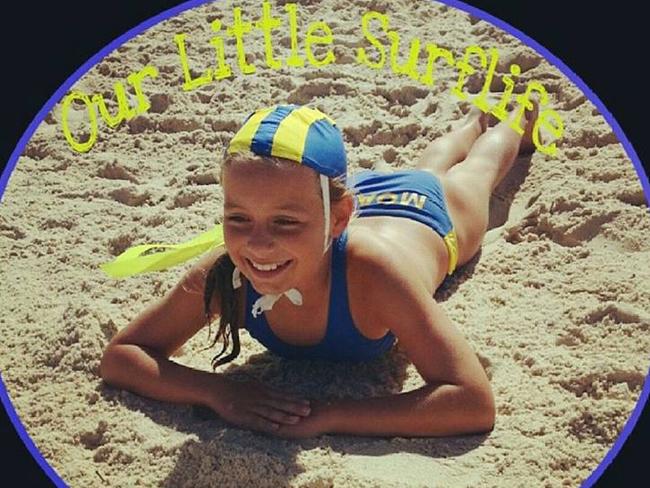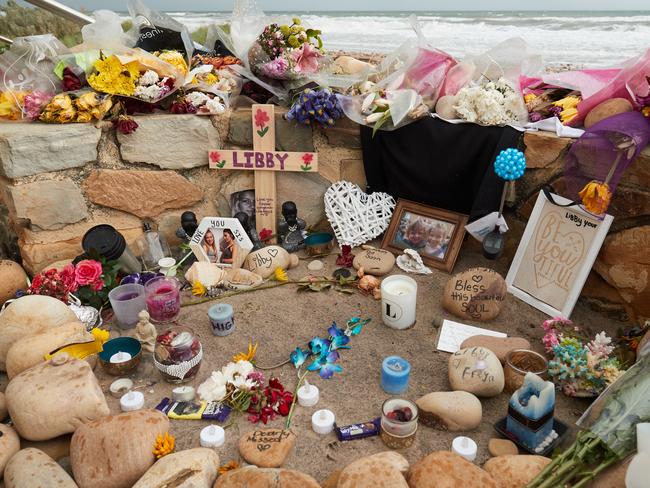How the Libby Bell fatal bullying tragedy is getting parents to talk
SHE was an award-winning junior lifesaver who “lit up a room” with her “million-dollar smile”. Yet,Libby Bell took her life at just 13 due to bullying, forcing parents to talk about this difficult issue.
Parenting
Don't miss out on the headlines from Parenting. Followed categories will be added to My News.
- Libby Bell’s parents back new law to put bullies behind bars
- Victorian victim’s family reach out for new law
- Mum’s tribute: Libby is too perfect for heaven
READ BELOW: The conversation starters that every parent needs
SHE was an award-winning state junior lifesaver who “lit up a room” with her “million-dollar smile”.
Adelaide schoolgirl Libby Bell appeared a fun-loving teenager with the world at her feet.
The bubbly 13-year-old loved her family and friends and was a respected member of the Moana Surf Life Saving Club.
But the Year 8 Seaford Secondary College student was battling a hidden anguish.
Libby was struggling to cope after what her family says was years of cyber bullying and physical abuse.
Eventually, the constant taunting and mocking over social media as well as physical altercations — one of which was captured on video — became too much.

Tragically, on August 28, Libby took her own life.
Her death has devastated her family, friends and the lifesaving community and sparked debate about how schools and authorities handle bullying.
Libby’s death also thrust the issue of cyber bullying into the spotlight.
Her uncle Clint Gow-Smith, 39, told The Advertiser his niece had received regular slurs and nasty messages over Facebook, Instagram and Snapchat.
He said she was also subject to physical attacks, including one at a Seaford fast food outlet last year when she was filmed having a drink poured over her.
But like many young bullying victims, Libby suffered in silence, keeping the impact of the torment to herself.
In the wake of their daughter’s death, her heartbroken parents Crystal and Ryan Bell bravely issued a public plea for victims to “speak up” if they were being targeted by bullies.
Ms Bell has vowed to become an anti-bullying advocate in a bid to help other young people.
The changing
nature of bullying
Australia’s eSafety Commissioner Julie Inman Grant described cyber-bullying — bullying via technology such as the internet and mobile phones, as a “modern manifestation of an age-old behavioural issue”.
“Bullying that takes place on the playground can be left at the school gate, but cyber-bullying is invasive and pervasive, and as seen with the tragic death of Libby Bell, the consequences can be devastating for the person targeted, their family and the wider community,” she said.

“Young people need to understand that just because they’re veiled by a cloak of anonymity, their actions can still have very real and devastating consequences for people in real life — including themselves.
“While one in five young Australians experience cyber-bullying, we know many more are witnesses to this behaviour so we need to encourage a culture of upstanders, not bystanders — where peers and friends stand up for each other and offer support to those being targeted online.”
Is there a flaw
in the law?
SA Police Commissioner Grant Stevens this week urged the State Government to consider introducing bullying specific legislation to make it easier for authorities to prosecute cases of long-running harassment.
Mr Stevens suggested SA could create legislation similar to Brodie’s Law — a law introduced in Victoria in 2011 under which anyone found guilty of causing physical or mental harm to a person faces up to 10 years in jail.
It was named after 19-year-old Melbourne cafe waitress Brodie Panlock, who took her own life after ongoing humiliating and intimidating workplace bullying.
Australian Conservatives State Leader Dennis Hood this week announced he would introduce legislation to be known as Libby’s Law into State Parliament by the end of the month.

Libby’s Law, which he hoped would be enacted by the start of the 2018 school year, would be similar to Brodie’s Law and would also jail serious offenders for up to a decade.
“For those recusant individuals that refuse to do the right thing there needs to be a firm punitive response and serious consequences for bullying,” Mr Hood told The Advertiser.
The Education Department has not revealed whether it has launched an internal investigation into allegations Libby was subject to bullying.
Education and Child Development Minister Susan Close has also declined to comment. Police are preparing a report for the Coroner.
In January this year, State Coroner Mark Johns urged families to speak openly about suicide — an issue he feared may be under reported.
“The prevalence is greater than one might think and we need to be prepared to discuss it as a phenomenon and not try to conceal it and pretend it doesn’t happen,” he told The Advertiser at the time.
His comments came as data from the National Coronial Information System revealed 2189 people took their own lives in SA from 2004 to 2014.
The state’s road toll over the same period was 1266.
Overwhelming community response
Tomorrow, hundreds of people are expected to attend a suicide prevention fundraiser walk in Adelaide’s south amid an outpouring of grief over Libby’s death.
Organiser, mother-of-two Michelle Benham, 43, said the walk had been organised a few months ago after the suicide deaths of several people close to her.
But she said it had taken on extra meaning after Libby’s death.
“Something has to change especially with bullying,” Ms Benham, of Morphett Vale, said.
The 5km walk will start at the Onkaparinga River mouth, Port Noarlunga South, at 9.30am and finish at Moana Beach.
South Australians are also throwing their support behind Libby’s Law.
A change.org petition backing the proposed legislation attracted more than 10,000 signatures in 24 hours.
The generosity of the wider community has also shone through with people donating more than $22,000 to Libby’s family via an online fundraiser created to financially support the Bells.
To donate to the family go to www.gofundme.com/j3tc7-the-bell-family
IF YOU OR SOMEONE YOU KNOW NEEDS HELP, CALL LIFELINE ON 13 11 14 OR
THE KIDS HELPLINE ON 1800 551 800 OR VISIT KIDSHELPLINE.COM.AU
The conversation starters that every parent needs
By Rebecca Baker, Social Affairs Reporter
THE tragic death of Libby Bell has parents everywhere grappling with the question of how to broach difficult subjects with their young teenagers — including the issue of bullying.
While there are no easy answers, educators and psychologists agree getting kids to open up about how they are feeling is key.
“Ask questions that require your child to elaborate,” suggests Pulteney Grammar School psychologist Chris Clements.
“The question, ‘Did you have a good day?’ can be answered with a simple, ‘Yep’, (but) ‘What was the best part of your day?’ is likely to draw your child into deeper conversation.
“Children often need a chance to wind down and time to process the day’s events ... sometimes starting with small talk and then gently probing about their day can ease them into the conversation.”

Intuitive Parenting Specialist Jodie Benveniste says it’s important to find the time to simply “connect” with kids.
“It’s about creating a ‘moment out of a moment’ that’s already there to just show up and really listen and connect with them — you can include it as part of a regular activity such as driving to school, bed time or sitting down to a family meal,” the Adelaide psychologist says.
“This can be really powerful if you do it on a daily basis, in helping to build strong relationships, making it more likely they’ll come to you when they are having trouble.”
Scotch College principal and dad of four John Newton says giving kids a bit of responsibility can also be empowering.
“Kids love to be told: ‘You know what to do and I trust you to do it’, even though in your heart you know it’s still a little risky ... (the challenge is) finding the right moment: To do this too early is dangerous. To do it too late is repressive.”
Developing Minds Psychology and Education director Kirrilee Smout says while getting kids to share emotions can be tricky, it is important.
“When we can’t tell people about our emotions — we show them — and not always in helpful ways ... negative emotions have a way of ‘wriggling’ out in one way or another,” she says.
Dr Smout suggests getting kids to write how they’re feeling and has created a “bad feelings” template that is free for parents to download from her Developing Minds blog.
“After doing this in writing a few times, they’ll get better at being able to do it verbally with you, and others. You might then be able to say “text me a bad feelings” letter — once they get the idea,” she says.
Smartphone-free time can also help. “Agree to a set of house rules where each family member places their phones/ devices on charge at a specified time,” suggests Mr Clements.



